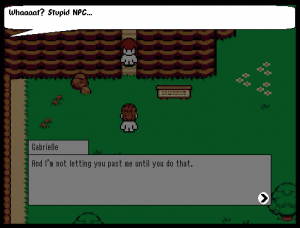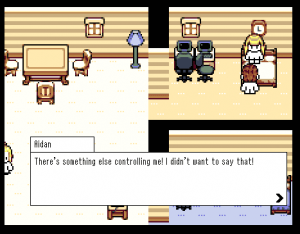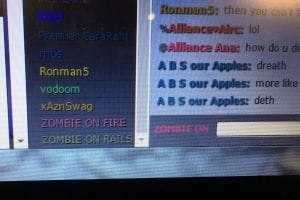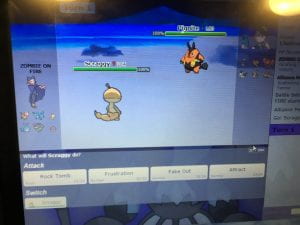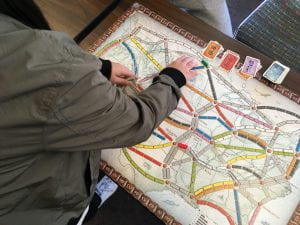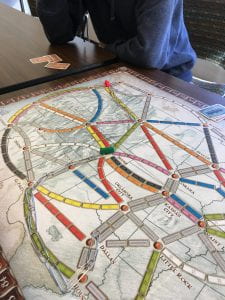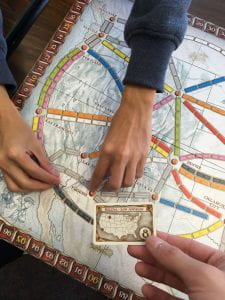The basic concept of my game and my playtest data can be found in this post:
As mentioned, one of the main themes of my game is control. I want to play with situations where the player is forced to do something that they don’t necessarily want to do. With more and more open-world games showing up nowadays, giving players autonomy and the ability to do whatever they want is important. But, I wanted to see what happened when I constrained the player in situations where they want to have choices, such as in dialog with other characters.
I also wanted to play with the perception of a ‘game’. The Narrator’s view of this game is most likely different than the player’s view. It believes that this game is a ‘typical RPG’ in which you solve puzzles and defeat enemies, but it is a lot more than that. It also involves helping the townsfolk and bonding with them, but the Narrator completely ignores this section. Having someone advocate against helping others and actively trying to prevent you from doing so creates an interesting conflict. I wanted to create a feeling of sympathy and helplessness with these cutscenes, to gauge the effect of similar cutscenes that I’ll implement in the future.
As displayed by my Indie Game show and tell, The Stanley Parable and Dr. Langeskov were both inspirations for the Narrator character in this game. Both of these games continually take note of the fact that they are games, and so does the Narrator in my game. It blurs the definition of a ‘game’, which is very similar to how the Dada movement blurs the definition of ‘art’.
————— Play the Demo of this game here! —————
If you want, you can select ‘New Game’ to play all the content I added previously. But the section for this class is under ‘Experimental Design Demo’ on the title screen.
TheSecondMindExpDesignDemoWindows
————————————————————————-
Experimental Design is all about pushing the boundaries of gaming. It is about creating nontraditional games that make people think about art, complicated subjects, or even themselves. I am a Computer Science and Game Design major, so I have not taken many art classes in my life. So, this was relatively new to me. While I read books about the Dada movement, Happenings, and the avant-garde, it seemed somewhat disconnected to game design, at least to me, at the beginning. But, by the end of the class, I realized why these readings are necessary in order to create new and experimental games.
The Dada movement and the Happenings were new and experimental ways of creating art. They questioned what art even was, and they employed new tactics like performance and the exquisite corpse to create unique art pieces never before explored. Experimental Games do this as well, and these movements are a great precedent for creating such games. One important fact I learned from the Happenings, and from Yoko Ono’s Grapefruit, was that the art piece was not necessarily the ‘art’, it was the performance and the experience that gave you a certain feeling that you could not get by just looking at the piece. This is especially important in games: you get a completely different feeling from playing the game than by watching it, and finding ways to instill the experience in the player is your job as a game designer.
This experience was shown in the film The Institute that we watched. When I began watching the film, I thought that there was some sort of external, worldly motivation behind it, but in the end, it was just to instill a certain experience in players. This experience was very strong and impactful, as one of the players named her dog Jujune, and got a tattoo based on the Institute. It gave the players a new way of looking at the world, just like this class gave me a new way of looking at both the world and experimental games. I feel that this had a great impact on my art pieces that I created this semester.
Most of my art pieces were about the experience created and when they were implemented and performance, because this is the aspect of the class that I got the most out of. My first piece, the step counting in Ruggles piece, let me feel the general crowdedness of the station. Just ‘counting steps’ does not evoke much on its own, but when it is performed, it allows the artist to understand more about and connect with their environment.
My second piece, the Ticket to Ride appropriation game, was an outlier, because I am a very avid board game player. I did not experiment with this one as much as I would have liked. The traditional rules-based gamer shone through here, however I feel that the appropriation allowed me to experiment and that it was beneficial.
My third piece, the Intervention on an online game server, was about evoking emotion through an experience. I wanted to create a more laid-back and friendly environment on a server that is mainly competitive. This was not that easy to implement and get working the way I wanted it to, because of the general ignorance of online players to ‘trolls’ and things that they did not care about. However, I found a way to get something working, and it did lighten the mood in the room for a bit.
Overall, this class opened my eyes to the many artistic movements that were pushing the boundaries of the traditional, and which of those movements succeeded and why. Many game classes are about traditional game design, but I feel that all game designers should take a class like this one and learn about experimental art movements, because it allows the game industry to become more diverse and creative, giving players more choices in what they play, and how they feel while playing games.

